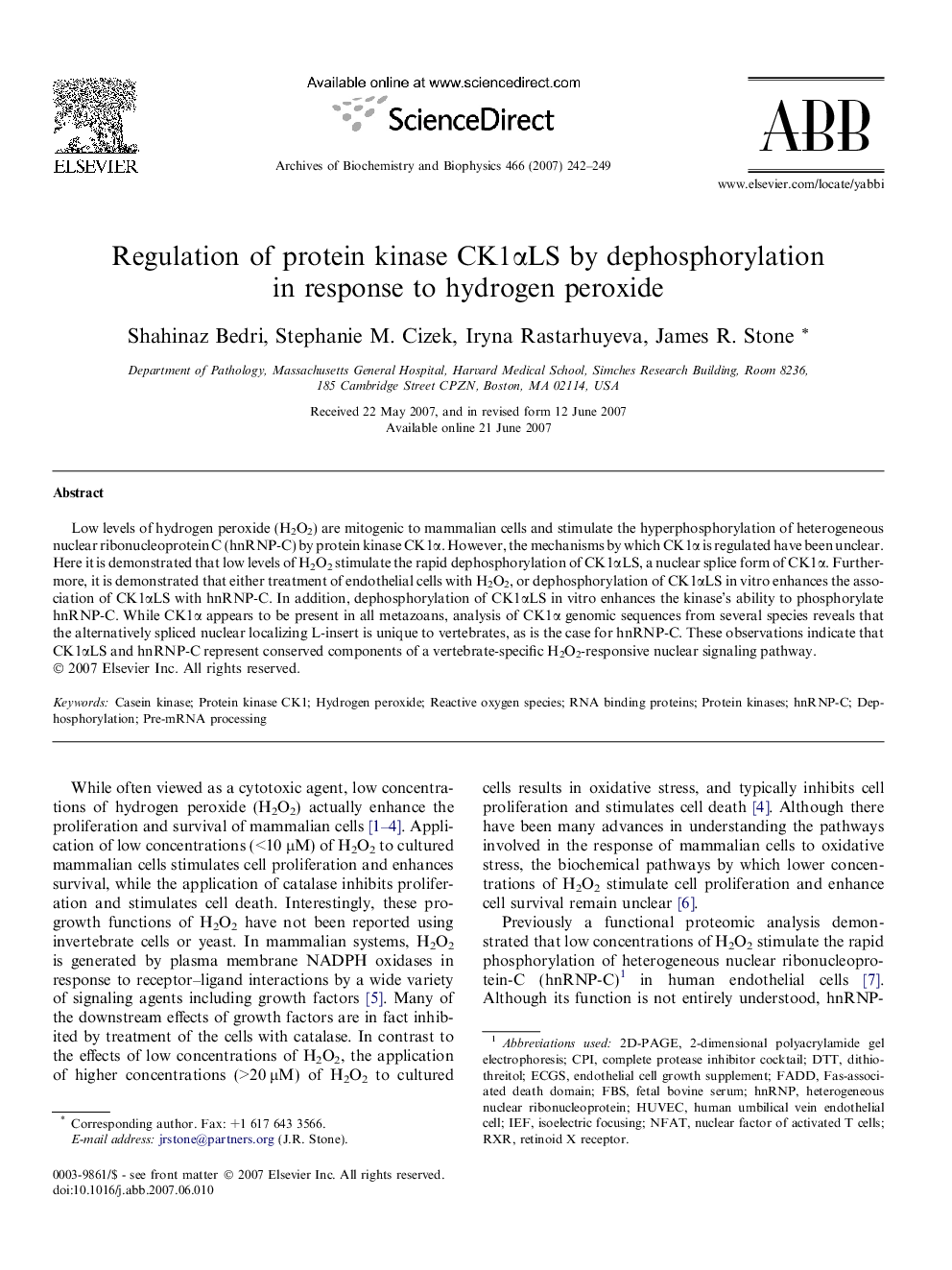| Article ID | Journal | Published Year | Pages | File Type |
|---|---|---|---|---|
| 1926963 | Archives of Biochemistry and Biophysics | 2007 | 8 Pages |
Abstract
Low levels of hydrogen peroxide (H2O2) are mitogenic to mammalian cells and stimulate the hyperphosphorylation of heterogeneous nuclear ribonucleoprotein C (hnRNP-C) by protein kinase CK1α. However, the mechanisms by which CK1α is regulated have been unclear. Here it is demonstrated that low levels of H2O2 stimulate the rapid dephosphorylation of CK1αLS, a nuclear splice form of CK1α. Furthermore, it is demonstrated that either treatment of endothelial cells with H2O2, or dephosphorylation of CK1αLS in vitro enhances the association of CK1αLS with hnRNP-C. In addition, dephosphorylation of CK1αLS in vitro enhances the kinase's ability to phosphorylate hnRNP-C. While CK1α appears to be present in all metazoans, analysis of CK1α genomic sequences from several species reveals that the alternatively spliced nuclear localizing L-insert is unique to vertebrates, as is the case for hnRNP-C. These observations indicate that CK1αLS and hnRNP-C represent conserved components of a vertebrate-specific H2O2-responsive nuclear signaling pathway.
Keywords
Related Topics
Life Sciences
Biochemistry, Genetics and Molecular Biology
Biochemistry
Authors
Shahinaz Bedri, Stephanie M. Cizek, Iryna Rastarhuyeva, James R. Stone,
